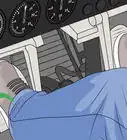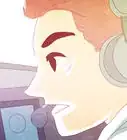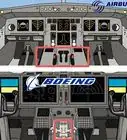This article was co-authored by wikiHow Staff. Our trained team of editors and researchers validate articles for accuracy and comprehensiveness. wikiHow's Content Management Team carefully monitors the work from our editorial staff to ensure that each article is backed by trusted research and meets our high quality standards.
There are 9 references cited in this article, which can be found at the bottom of the page.
wikiHow marks an article as reader-approved once it receives enough positive feedback. In this case, 83% of readers who voted found the article helpful, earning it our reader-approved status.
This article has been viewed 94,304 times.
Learn more...
Getting your private pilot’s license takes a lot of time and effort, but it’s worth it to be able to explore the skies. While each country has different costs of training and testing, the general path to getting a license is fairly similar. To obtain the license, you will have to study extensively either on your own or in class. In addition, you will have to do 40-70 hours of flight training to learn the ropes. You will also have to pass several exams to determine whether or not you are ready to hold your license. With determination and focus, you will be able to complete all your training and testing and live out your dreams of flight.
Steps
Making Sure You're Eligible
-
1Make sure you meet the basic requirements. There are a couple basic requirements that you must meet to be able to get your license: you must be 17 or older, and you must be fluent in English. This is an international requirement, even if you are getting your license in a country whose official language is not English.[1]
- English is the international language of aviation, a measure put in place by ICAO, or the International Civic Aviation Organization.
-
2Make sure you have enough money. Getting your private pilot license is an expensive process. Not only do you have to pay for flying lessons, but most people have to rent a plane to use for lessons which is usually the highest cost. In addition, you have to pay for equipment, fuel and test costs. Total costs for a private pilot’s license in the United States usually run between $8,000 and $13,000. It may vary depending on what country you live in.[2]
- There are a few things you can do to cut the cost. If you have multiple options of places to take lessons, find lessons at the best value you can.
- Buy cheaper or used equipment.
- Study hard for your exams so that you don’t fail and have to take them multiple times. Taking the exams costs money so you will save if you pass them the first time.
- Another thing is to consider getting a sport license, which requires only 20 training hours. This can save you a few thousand dollars.
- If you have a sports license, you can still carry a passenger with you, but there are a few restrictions. These include that you cannot fly at night, and that you have limited aircraft options.
Advertisement -
3Get a medical exam. Though you can start your training without a medical exam, it’s a good idea to get one straight off the bat. If it turns out that you aren’t eligible to fly, you won’t waste money starting your lessons. You will need to find an Aviation Medical Examiner near you to set up a physical. To be able to fly in the United States, you have to receive at least a third class FAA medical certificate.[3]
- At the exam, you will be asked your medical history along with any medication you take regularly.
- You will get an regular physical exam and be asked to provide a urine sample.
- If you are over 40, you will be required to take an EKG, which tests for problems with electrical activity in your heart.
- You also will need to pass an eye exam.
-
4Clear out time in your schedule. Getting your license will take time, so prepare to be working on it for around six months. Depending on your schedule, clear out at least one day a week during which you can take lessons or study. If you jump into the process without a clear schedule, it’s easy to either get overwhelmed or to lose focus.
-
5Know what kind of aircraft you want to fly. Before taking lessons, decide whether you want to learn to fly an airplane, a helicopter, a hot air balloon or a different type of aircraft. Most new pilots choose to learn to fly an airplane with a single engine, but you have a few different options.
Taking Flying Lessons
-
1Find the right instructor. You want to find an instructor that is experienced at both flying and teaching, and can communicate well. Try to find an instructor who has done more than 3,000 hours of teaching.[4]
- The easiest way to find an instructor is through a flight school in your area, though some flight instructors do work freelance.
- Also be sure to pick an instructor that you feel at ease with. Flying for the first time is nerve-wracking as it is, so you want to find someone who will make you feel relaxed and calm.
-
2Start your lessons. Your flying lessons are the most critical part of your learning process. Different countries vary on the amount of time that you need to train, so check your country’s individual standards by researching on the internet or calling a flight school. No matter what country you are in, you will need to do a certain amount of hours with your instructor, plus night and cross-country flights, as well as solo flights with takeoffs and landings. In the United States, the breakdown is as follows:[5]
- 20 hours of training with an instructor (including 3 hours of cross-country, 3 night hours, and 3 hours of instrument flight training).
- 10 hours of solo time (including travel to various airports with set amounts of takeoffs and landings.)
- Although this only adds up to 30 hours, you need 40 hours in the US to complete training. Most people do more than 40 hours; a good estimate of the average amount of hours people generally do is 60 hours. This is the amount of time that it generally takes to master all the skills you need.[6]
-
3Fly consistently. Don’t take long breaks between your flying sessions. Even a couple weeks can make you forget what you have learned so that you will have to do more hours to master flying. This will cost you more money and make the entire process longer and more difficult.[7]
-
4Let your instructor know if you need to repeat lessons on certain skills. You will be learning many different aspects of flying. When you learn so much at one time, it can be difficult to retain it all. If there is an aspect of piloting that you feel uncertain about, tell your instructor that you’d like to go over it again. Your instructor is there to help, so don’t be hesitant about asking them to repeat themselves.
- Some of the skills and knowledge you will learn are: airport operations, preflight procedures, takeoffs and landings, navigation, flight at various air speeds, stalls, night operations and emergency operations.[8]
Learning About Flying
-
1Ask your flight instructor for resources. You will need to study to gain enough knowledge to pass your tests. There are study guides out there for people training to get their private pilot’s license, which is a good way to start. But you should make sure to ask your instructor for good resources.
- Your instructor has experience getting people through their training and testing, and may know the best and latest resources out there to help.
-
2Study flight procedures. In addition to practicing flight procedures in your lessons, it’s a good idea to study them on your own time. Different people have different ways of learning, and many people benefit from having information presented in several different ways.[9]
- Reading about what you have been learning in your lessons will reinforce the knowledge so that you will have a better chance of remembering the skills and information.
-
3Study aeronautics. To get your private pilot’s license, you have to pass not only a flying test-run, but also a knowledge test. The knowledge test includes a written and oral exam that will test your aeronautical knowledge. Some areas of study you will need to explore are aerodynamics, aircraft systems, aeronautical decision making, how to read weather forecasts and reports, and planning for the unexpected during flights.[10]
-
4Take classes. If you are having a hard time learning all of your “ground knowledge” at home, or are confused about what to study, consider enrolling in a class taught by a flight instructor. This class will be specially formulated for providing the information you need to know to safely fly and also to pass the written test.[11]
Taking the Tests
-
1Take a practice written exam. You can find practice written exams either online or through your school. Taking these tests will let you know what you can expect from the real thing. Score your test, and take note if there is a particular area of study you need to brush up on. Go over this subject before you take the real test.
-
2Take the written exam. When you are confident you are ready, take the written test. In the United States, the written exam has 60 questions and must be completed within two and a half hours. You must get at least a 70% to pass the exam.[12]
- The written exam is offered in seven different aircraft categories: airplane, helicopter, gyroplane, glider, hot air balloon, gas balloon and ligher-than-air gas ship, depending on what aircraft you have taking lessons on.
- The exam usually runs for $90 in the United States.[13]
-
3Take the oral test. The oral test comes right before you take practical flight exam. For this test, the examiner will give you a specific hypothetical flight route, and ask you plan the details including things like the time enroute, the navigation, the fuel burned, etc. You also will go over aeronautical knowledge that you have studied.[14]
-
4Do the practical exam. After the oral exam, you will be asked to act as pilot in the practical examination. You will be asked to start a cross country flight, then plan a course to a nearby airport. This will test your ability to plan on the spot and improvise, which is an essential part of flying as conditions are constantly changing.[15]
- No matter what, keep your focus and don’t get distracted. Some examiners may purposefully try to distract you to see if you have the level-headed temperament needed to fly.
- The cost of the practical exam in the United States usually run between $300 and $400.[16]
-
5Maintain your license. Congratulations, you earned your private pilot license! Keep it in the back of your mind that every couple years, you must complete another quick oral exam and check-in. Make sure that the person giving you your license has told you the specifics for maintaining it.
Community Q&A
-
QuestionWhat is the address of licensing authority for Florida?
 DanoyachtcaptTop AnswererThere is no state license authority; in the U.S., the address for all states is the FAA (Federal Aviation Administration).
DanoyachtcaptTop AnswererThere is no state license authority; in the U.S., the address for all states is the FAA (Federal Aviation Administration). -
QuestionCan I get a license if I have a felony?
 DanoyachtcaptTop AnswererWhen you apply for the license, that question will be on the application. The FAA will decide based on the conditions of the event.
DanoyachtcaptTop AnswererWhen you apply for the license, that question will be on the application. The FAA will decide based on the conditions of the event.
Warnings
- If you have any medical concerns about flying, tell your doctor.⧼thumbs_response⧽
- Never operate an aircraft under the influence of alcohol.⧼thumbs_response⧽
References
- ↑ http://www.private-pilot-license.com/
- ↑ http://www.bloomberg.com/consumer-spending/2012-03-08/the-real-cost-of-becoming-a-pilot.html#slide15
- ↑ http://www.bloomberg.com/consumer-spending/2012-03-08/the-real-cost-of-becoming-a-pilot.html#slide2
- ↑ http://www.bloomberg.com/consumer-spending/2012-03-08/the-real-cost-of-becoming-a-pilot.html#slide5
- ↑ https://www.ecfr.gov/cgi-bin/text-idx?c=ecfr&sid=40760189a03dfea0b501608f33820a45&rgn=div5&view=text&node=14:2.0.1.1.2&idno=14#sp14.2.61.e
- ↑ http://www.private-pilot-license.com/
- ↑ http://www.flyingmag.com/training/learn-fly/five-ways-reduce-flight-training-costs
- ↑ http://www.private-pilot-license.com/
- ↑ http://www.flyingmag.com/training/learn-fly/five-ways-reduce-flight-training-costs
- ↑ http://www.private-pilot-license.com/
- ↑ http://www.private-pilot-license.com/choosing-a-flight-school
- ↑ http://www.private-pilot-license.com/private-pilot-test
- ↑ http://www.tests.com/Private-and-Commercial-Pilot-Testing
- ↑ http://www.private-pilot-license.com/private-pilot-test
- ↑ http://www.private-pilot-license.com/private-pilot-test
- ↑ http://www.tests.com/Private-and-Commercial-Pilot-Testing
-Step-1-Version-2.webp)
-Step-2-Version-2.webp)
-Step-3-Version-2.webp)
-Step-4-Version-2.webp)
-Step-5.webp)
-Step-6.webp)
-Step-7.webp)
-Step-8.webp)
-Step-9.webp)
-Step-10.webp)
-Step-11.webp)
-Step-12.webp)
-Step-13.webp)
-Step-14.webp)
-Step-15.webp)
-Step-16.webp)
-Step-17.webp)
-Step-18.webp)

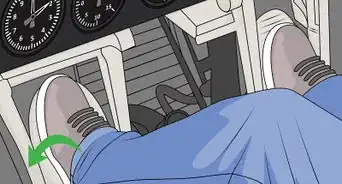


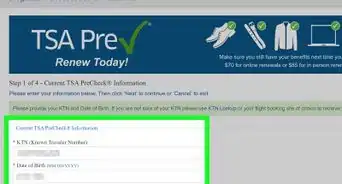
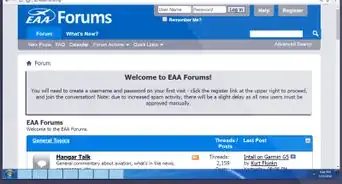

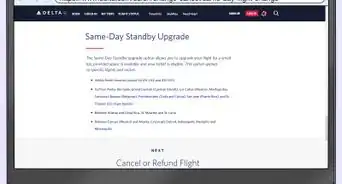
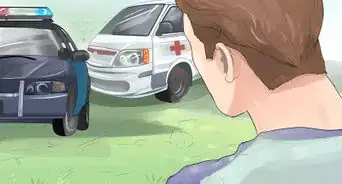
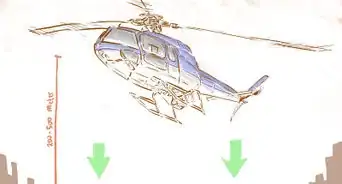



-Step-15.webp)










